- Home
- Services
Services

Pushbullet Push a note Integration
$0.00
The Pushbullet API is a service that enables inter-device communication and notification. It allows users to easily push information from one device to another, or to multiple devices simultaneously. One of the API endpoints provided by Pushbullet is the "Push a note" endpoint. This endpoint can be used to send a simple note, which is a text mes...

Pushbullet Watch objects Integration
$0.00
The Pushbullet API provides a set of endpoints for developers to interact with the various features presented by the service, one of which includes the "Watch objects" endpoint. This endpoint allows for the monitoring of real-time events or changes that occur on a user's devices registered with Pushbullet. By leveraging this endpoint, developers...

Pushcut Action Executed Integration
$0.00
```html

Pushcut Send a Notification Integration
$0.00
Pushcut is an iOS app that helps automate notifications and actions on your iPhone or iPad. The Pushcut API allows developers and users to trigger these notifications from external sources. The "Send a Notification" endpoint is particularly useful for sending customized alerts to an iOS device from virtually any service that can make an HTTP req...
PushEngage Create a Draft Push Integration
$0.00
Understanding the PushEngage API Endpoint: Create a Draft Push The PushEngage API provides a suite of functionalities to integrate web push notifications into your application or service. One of these features is the 'Create a Draft Push' endpoint. This endpoint allows developers to programmatically create a draft of a push notification within ...
PushEngage Create a Scheduled Push Integration
$0.00
Create a Scheduled Push with PushEngage API The Create a Scheduled Push endpoint of the PushEngage API is designed to allow developers to program push notifications to be sent at a specific time in the future. This feature is vital for businesses and developers who want to engage their users effectively without manually sending notifications at...
PushEngage Create a Sent Push Integration
$0.00
PushEngage API: Creating a Sent Push Exploring the PushEngage API: Create a Sent Push The PushEngage API endpoint for creating a sent push is a powerful tool that can be used to programmatically send notifications to subscribers' devices. Push notifications are an essential communication tool for engaging users wi...
PushEngage Get Analytics of Push Integration
$0.00
The PushEngage API endpoint "Get Analytics of Push" provides a way to retrieve statistical data related to push notifications that have been sent to subscribers. By leveraging this API, developers and marketers can gain insights into the performance of their push notification campaigns, which is critical for understanding user engagement and opt...
PushEngage Get Summary Analytics Integration
$0.00
Exploring PushEngage API: Get Summary Analytics Endpoint Exploring PushEngage API: Get Summary Analytics Endpoint The PushEngage API is a powerful tool for developers to integrate push notification services with their applications. One of the endpoints provided by the PushEngage API is the Get Summary Analytics endpoint. Th...
PushEngage Make an API Call Integration
$0.00
PushEngage API: Make an API Call Endpoint The PushEngage API provides a way for developers to programmatically send browser push notifications to users who have subscribed to receive them from a particular website. The "Make an API Call" endpoint refers generally to any action taken via the API that can affect the service, such as sending notif...

Pushover Make an API Call Integration
$0.00
Understanding the Pushover API End Point: Making an API Call The Pushover API is a service that enables developers to send real-time notifications to Android, iOS, and desktop devices. One crucial end point of this API is "Make an API Call," which allows sending messages to users through a simple HTTPS request. This API end point serves various...

Pushover Send a Message Integration
$0.00
Pushover is a service that provides real-time notifications on your phone, tablet, desktop, smartwatch, and other devices. The Pushover API's "Send a Message" endpoint is a powerful feature that allows developers to programmatically send messages to users with a Pushover account. Here's a detailed explanation of what can be done with this API en...

PushOwl
$0.00
PushOwl Push Notifications | Consultants In-A-Box Turn Cart Abandonment into Revenue with PushOwl and AI Automation PushOwl lets Shopify merchants send browser push notifications to people who opt in while they browse a store. Instead of waiting for an email address, PushOwl captures permissioned subscribers and delivers bit...
Pushwoosh Create a Push Notification Integration
$0.00
The API endpoint "Create a Push Notification" from Pushwoosh allows developers to programmatically send push notifications to user devices from their server-side applications. Push notifications are a powerful communication tool for engaging with users, providing timely information, and encouraging specific actions within a mobile or web applica...
Pushwoosh Delete a Push Notification Integration
$0.00
```html Pushwoosh API: Delete a Push Notification Utilizing the Pushwoosh API: Deleting a Push Notification Pushwoosh offers a robust API that allows developers to integrate advanced push notification features into their applications or websites. One such endpoint provided by the Pushwoosh API is Delete a Push Noti...
Pushwoosh Get a Push Notification Integration
$0.00
` Understanding the Pushwoosh Get a Push Notification API Endpoint The Pushwoosh Get a Push Notification API endpoint is a powerful feature within the Pushwoosh suite of tools designed for managing push notifications across various platforms. This API endpoint enables developers to retrieve information about individual push notificati...
Pushwoosh Make an API Call Integration
$0.00
Sure, here is an explanation of the Pushwoosh `Make an API Call` endpoint in HTML: ```html Understanding the Pushwoosh Make an API Call Endpoint Understanding the Pushwoosh Make an API Call Endpoint Pushwoosh is a push notification service that allows developers to send notifications to users across various p...
Pushwoosh Search Push Notifications Integration
$0.00
Pushwoosh is a comprehensive push notification service that allows developers to send notifications across different platforms such as iOS, Android, Windows, etc. Their API provides developers with programmatic access to their service, enabling automation and integration with other software systems. One of the API endpoints provided by Pushwoos...

Put.io Adds a Transfer to Put.io Integration
$0.00
Put.io is a cloud storage service that also acts as a proxy to torrents whereby it fetches metadata and data from torrents and then makes the files available to users directly from their servers. One of their API endpoints allows users to add transfers to their Put.io account. Here's an elaboration on what can be done with the "Adds a Transfer t...

Put.io Make an API Call Integration
$0.00
Here is an explanation of what can be done with the Put.io API endpoint "Make an API Call" and the problems that can be solved with it, presented with proper HTML formatting: ```html Understanding Put.io API Endpoint: Make an API Call Understanding Put.io API's "Make an API Call" Endpoint The Put.io API ...

Qonto Add an Attachment Integration
$0.00
Utilizing the "Add an Attachment" API Endpoint The "Add an Attachment" API endpoint is a powerful interface for developers to programmatically attach files to specific resources in an application. Depending upon the system's context, these resources could be emails, calendar events, tasks, tickets, or any entity within the application that supp...
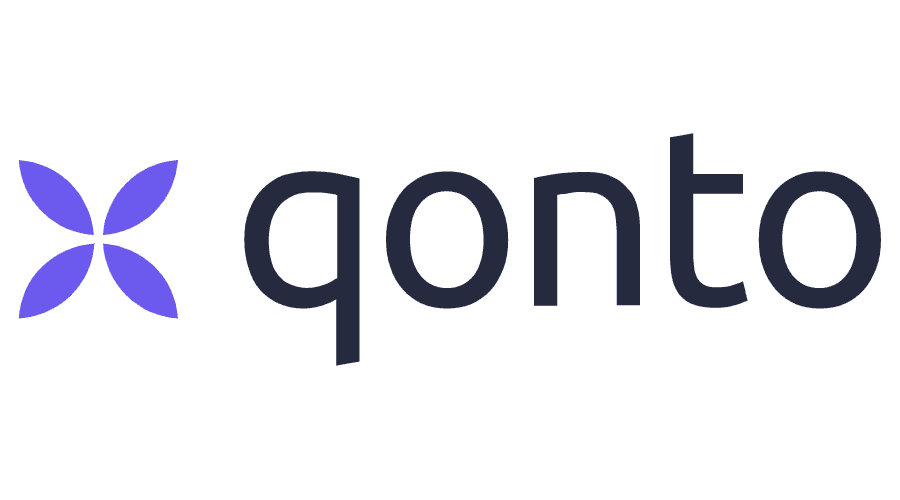
Qonto Create a Client Integration
$0.00
Understanding the 'Create a Client' API Endpoint An API (Application Programming Interface) endpoint is a touchpoint of communication and interaction between a client and a service provider, which is exposed by the server. The 'Create a Client' endpoint specifically is meant for registering a new client in the system. A client could refer to an...
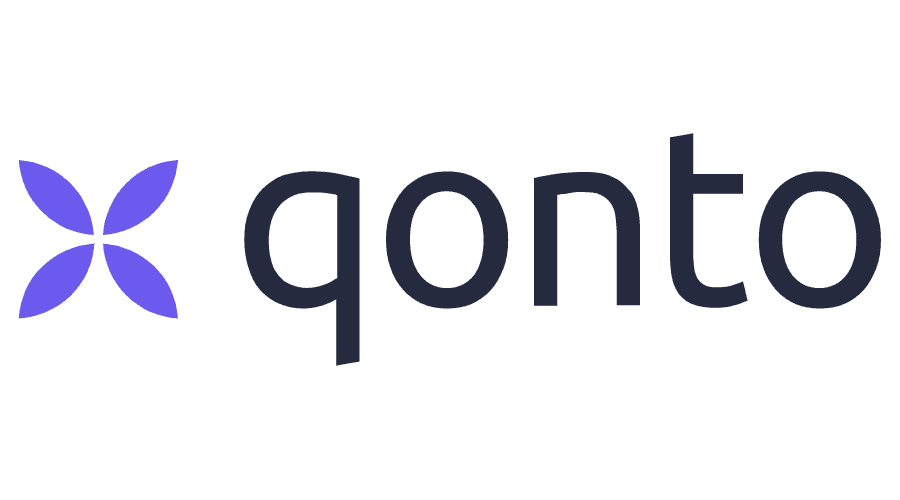
Qonto Create a Client Invoice Integration
$0.00
```html Understanding the 'Create a Client Invoice' API Endpoint Exploring the 'Create a Client Invoice' API Endpoint The 'Create a Client Invoice' API endpoint offers a programmable way to generate invoices for services rendered or products sold to clients. The use of such an API can facilitate several ta...

Qonto Create a Membership Integration
$0.00
```html Explaining Create a Membership API Endpoint Understanding the "Create a Membership" API Endpoint The "Create a Membership" API endpoint is a crucial component of many software systems where managing user access to services or resources is required. This endpoint is part of an application programmi...

Qonto Create a Team Integration
$0.00
In the context of software platforms, an API (Application Programming Interface) endpoint is a specific URL path that is designed to handle a certain type of request. One such endpoint is the "Create a Team" API endpoint. This endpoint typically allows users of the platform to programmatically create new teams within the platform. Below, I expla...
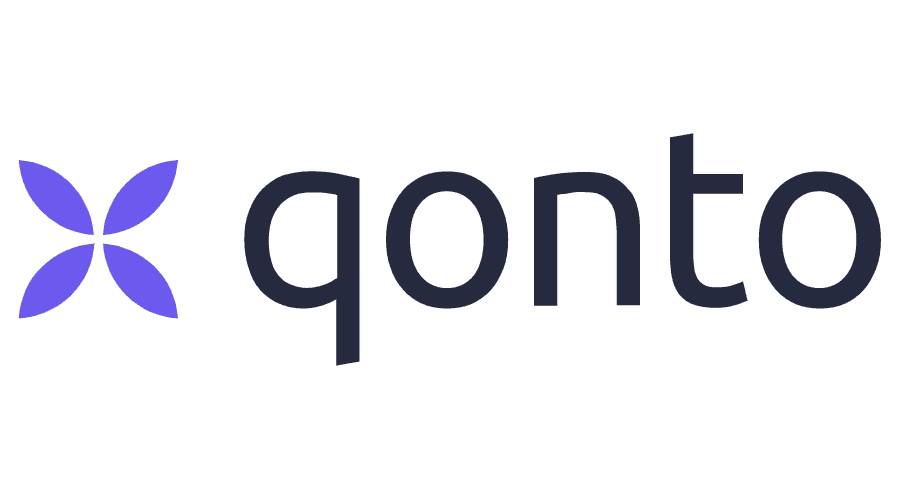
Qonto Create an External Transfer Integration
$0.00
API Endpoint: Create an External Transfer Understanding the "Create an External Transfer" API Endpoint An API (Application Programming Interface) endpoint is a touchpoint of communication and interaction between an API and a server. The "Create an External Transfer" endpoint is a specific...
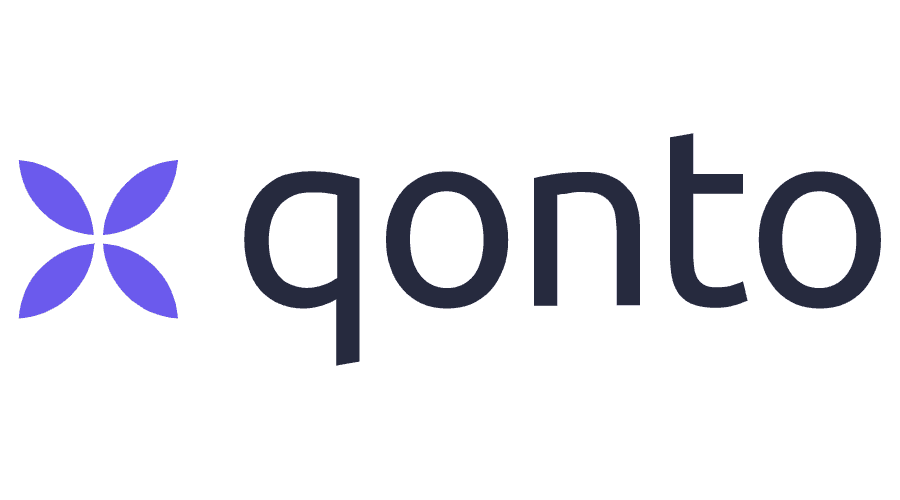
Qonto Create an Internal Transfer Integration
$0.00
```html Internal Transfer API Endpoint Understanding the "Create an Internal Transfer" API Endpoint The "Create an Internal Transfer" API endpoint is a powerful tool designed to facilitate the movement of assets or funds between accounts or entities within the same organization or financial institution. This endpo...
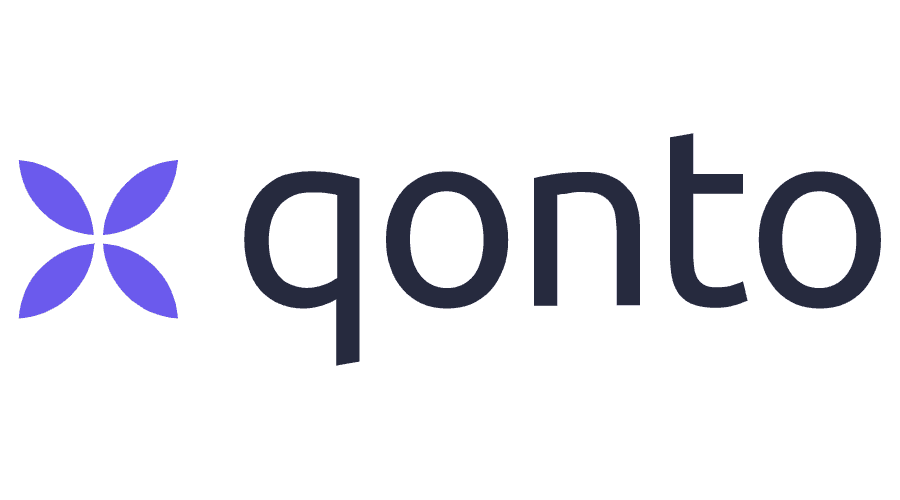
Qonto Get a Client Integration
$0.00
Uses of the "Get a Client" API Endpoint An API (Application Programming Interface) endpoint is a specific point of interaction where APIs receive requests and send responses. The "Get a Client" API endpoint is typically a part of a larger web service API, which could belong to a Customer Relationship Management (CRM) system, financial software,...
Collections
- 0CodeKit Integrations
- Accounting
- ACH Processing
- Active Campaign
- Ai Automations and Integrations
- Aircall
- All Integrations
- Annuities
- ATS
- Auto & Home
- BI and Analytics
- Brand Management
- Bullhorn Integration Endpoints
- Business Infrastructure
- Business Operations
- Business Retirement Plans
- Business Systems
- Card Access
- CCaaS
- Clio Integrations
- Cloud Services
- Connectivity, MPLS, Private Line
- Cost Reduction
- CPaaS/SIP
- Customer Relationship Management
- Data Center
- Developer Platforms
- Development
- E-Commerce
- E-Commerce Software
- eREIT
- Field Service Automations and Integrations
- Finance Automations and Integrations
- Financial
- Fire Alarm Systems
- Fleet Tracking
- FTP Hosting
- Gift Card & Loyalty
- Google Sheets
- Graphic Design
- Health
- Healthcare Software
- HR and HCM Automations and Integrations
- HR Software
- Human Resources
- Implemenation
- Insurance
- Integrate RingCentral With Monday.com
- Integrations
- International
- Intrusion Systems
- Investments
- Invoicing
- Invoicing and Contract Software
- Lead Generation
- Learning Management
- Legal
- Legal Services
- Long Term Care
- Managed Investments
- Managed Services
- Marketing
- Marketing
- Marketing Automations and Integrations
- Micro Funding
- Mobile Payments
- Mobility/IoT
- Monday.com Integrations
- Mutual Funds
- Other
- Others Software
- Outsourced Sales
- Pay Per Click
- Payment Processing
- Payroll
- Phone Systems
- Photography
- Pre-Paid Legal
- Print & Promotional
- Process Implementation
- Product Management
- Productivity
- Productivity & Efficiency Improvement
- Project Management
- Recuritment
- Recurring Payments
- RingCentral Integrations
- Sales Software
- Sales Training
- SD-WAN
- Search Engine Optimization
- Security
- Security and IT Management
- Security Systems
- Sling Scheduling Features
- SMS Communication
- Social Media
- Social Media Management
- Telecommunications Automations and Integrations
- Term Life
- Top Products
- Twilio Integrations
- UCaaS
- Video Conferencing
- Video Production
- Video Surveillance
- Web Development
- Web Hosting
- Webinar & Screen Sharing
- Workflow Training
- Zoho
- Zoho CRM Integrations
- Zoho Email & Collaboration
- Zoho Finance
- Zoho HR
- Zoho Legal
- Zoho Marketing
- Zoho Sales
- Zoho Service
- Zoho Suites
Brands
- 019sms
- 0CodeKit
- 1001fx
- 10to8
- 123FormBuilder
- 1CRM
- 1net CRM
- 29 Next
- 2all CMS
- 3Scribe Transcription
- 4leads
- 602 Sofa
- 88stacks Image Generator
- 8x8
- A&A/FITPASS Calltracking
- Abby
- ABRA FlexiBee
- Abyssale
- AcademyOcean
- Accelo
- Access Charity CRM
- Action Network
- Active Campaign
- ActiveDemand
- ActiveTrail
- Adalo
- AddMe Reviews
- ADManager Plus
- Adobe Acrobat Sign
- Adobe CC Libraries
- Adobe Commerce
- AdRoll
- AfterShip
- Agencyjoy
- Agendor
- Agile CRM
- AgilePlace
- Aha!
- AidaForm
- Aircall
- Airmeet
- Airparser
- AirTable
- AITable
- Alegra
- Alexa Internet
- All-Images.ai
- Allmysms
- Amazing Marvin
- Amazon Lambda
- Amazon SES
- Amazon SNS
- AmeriCommerce
- Amplitude
- Anabix CRM
- Android
- AnnounceKit
- Apaleo
- Apifonica
- Apify
- APITemplate.io
- Apolearn LMS
- Apollo
- Apple iOS
- Apple Map Links
- Appointlet
- AppSheet
- ApptiveGrid
- ApuTime
- ArcGIS Field Maps
- Archive
- Arduino
- Arlo
- Asaas
- Asana
- Aspose
- Atarim
- Atera
- AtSpoke
- Attio
- Aunoa
- Aurora Solar
- Auth0
- Authvia
- Automizy
- Autopilot
- Avaza
- Avochato
- Award Force
- Backendless
- Bamboo HR
- Bambuser
- Bannerbear
- Banqup
- Barcodes
- Basecamp 2
- Basecamp 3
- BaseLinker
- Baserow
- Beamer
- Becon
- Beds24
- Beehiiv
- Beeminder
- BeLazy
- Bellbird
- Betty Blocks
- Bexio
- Bidsketch
- Big Cartel
- Bigin by Zoho CRM
- BigMailer
- BigMarker
- BigML
- BigQuery
- Billit
- Billplz
- Billsby
- Binance
- Bind ERP
- Bing Spell Check
- Bitbucket
- Bitly
- Bitrix24
- Bitskout
- BizMachine
- Blink
- BlockSurvey
- Blogger
- BlueLink
- Bluesky by Unshape
- Boldem
- Bolt IoT
- Bonusly
- Book Like A Boss
- Bookafy
- Boomerangme
- BoondManager
- Booqable
- Boost Note
- Borisbot
- BotDistrikt
- Botsheets
- Botsify
- BotStar
- Bouncer
- Box
- Brain Pod AI
- Braintree
- Brave
- Breeze
- Brevo
- Brightflag
- BringData.co
- Browse AI
- BSI
- Bubble
- Buffer
- BugHerd
- BulkGate
- Bullet
- Bullhorn
- Burst SMS
- Businesslogic.online
- Byteplant Address Validator
- Byteplant Email Validator
- Byteplant Phone Validator
- Caflou
- Cal.Com
- Calendly
- California Bank & Trust
- Call Assist
- Call Tracking Metrics
- Calley
- CallHippo
- Callingly
- CallRail
- Campaign Monitor
- Candu
- Canny
- Canvas LMS
- Capsule CRM
- Captain Data
- Captivate
- Carbone
- Cargoboard Shipping & Tracking
- Caspio
- CDP & CRM CareCloud
- Celoxis
- Cflow
- Channels
- Chargebee
- ChargeOver
- ChartMogul
- Chatbase
- ChatBot
- Chatforma
- Chatfuel
- ChatGuru
- Chatra
- ChatSonic
- Chatwork
- Checkr
- Checkvist
- Chiavistello
- ChytryStart
- Cin7
- Circle
- Cisco Webex
- Citibank
- Citrix ShareFile
- Cituro
- Clearbit
- Clearout
- Clepher
- CleverReach
- Clicfans
- Clickatell
- ClickFunnels
- ClickMeeting
- ClickSend SMS
- Clicksign
- ClickUp
- Clieent® CRM
- Cliengo
- Clientary
- Clientjoy
- Clio
- Clio Manage
- Clockify
- Close CRM
- Cloud BOT
- CloudConvert
- Cloudflare
- Cloudinary
- Cloudmersive
- Cloudpress
- CloudTalk
- Clover POS
- Cloze
- ClubPlanner
- Clust
- CNPJá
- Coassemble
- Coda
- CodeGPT
- Cognito Forms
- CoinMarketCap
- Colligso TextIn
- Colligso WalletIn
- Comeet
- CommCare
- CommerceHQ
- CommPeak
- CompanyHub
- Confiban
- Confluence
- Constant Contact
- Consultants In-A-Box
- consultantsinabox
- Contact Form 7
- Contacts+
- Contentful
- Contractbook
- Convercus Loyalty
- ConvertBox
- Convertio
- ConvertKit
- Copilot
- Copper
- coreBos
- Corsizio
- Corymbus
- Costbucket
- Coveo
- CPF.CNPJ
- CraftMyPDF.com
- CraftQL
- Crisp
- CRM Messaging
- Crocoblock
- Crowdin
- CrowdPower
- CS-Cart
- CSV
- Custify
- Custom JS
- Customer.io
- Customerly
- Cuttly
- Cuttly Team
- Cyfe
- D7SMS
- Data store
- Data24-7
- Databox
- Datadog
- Datamz
- Datelist
- Daylite
- DEAR Inventory
- DeBounce
- Deel
- Deepgram
- DeepL
- Deezer
- Delesign
- Delighted
- Demio
- Demodesk
- Deputy
- Deskera
- Dext
- DHL
- Diabolocom
- Dialpad
- Diffbot
- DigiSign
- Digistore24
- DigitalOcean Spaces
- Diigo
- Disciple Tools
- Discord
- Discourse
- Disparo Pro
- Disqus
- dlvr.it
- DocCrafter
- Docparser
- DocsFold
- DocsGenFlow
- DocuGenerate
- Document360
- Documentero
- Documint
- Docupilot
- DocuSign
- DocuWare
- Dokan
- Domotron control
- Donorbox
- Dootax
- Dotdigital
- Dribbble
- Drift
- Drimify
- Drip
- Dropbox
- Dropbox Sign
- Dropcontact
- DropFunnels
- Drupal
- Dubb
- Dux-Soup
- Dynalist
- E-conomic
- E-goi
- Earned Value
- Easelly
- Easiware
- Easy Project
- Easybill
- EasyCSV
- Easydoc
- Easypay
- EasyPost
- Easyship
- EasyWeek
- Ecologi
- Ecomail.cz
- Eden AI
- eDock
- Edusign
- EenvoudigFactureren
- EET
- eFileCabinet
- Egnyte
- Elastic Email
- Elasticsearch
- Eledo PDF
- Element451
- Elementor
- Elements.cloud
- ElevenLabs
- Elite Seller
- Elopage
- Email List Verify
- Emailkampane.cz
- EmailOctopus
- Emailvalidation
- Emelia
- Emercury
- Emma
- Emporix Commerce
- Emporix Orchestration Engine
- Encryptor
- Endorsal
- Engage
- Engage AI
- EngageBay
- eSignatures.io
- EspoCRM
- Etsy
- Eventbrite
- Eventzilla
- Everhour
- Evernote
- Eversign
- EverWebinar
- Evolio
- eWay-CRM
- Exact Spotter
- Expanzo
- Expense Management Fidoo
- Expensify
- Experian Aperture
- Ezeep Blue Printing
- EZOfficeInventory
- Facebook Ads Campaign Management
- Facebook Catalogs
- Facebook Groups
- Facebook Insights
- Facebook Lead Ads
- Facebook Messenger
- Facebook Pages
- FaceUp
- Factorial
- Fakturoid
- FAPI
- FAPI Member
- FareHarbor
- FastField
- Fatture in Cloud
- FaunaDB
- Favro
- Feedier
- Feedly
- Fibery
- Figma
- FileCloud
- Files.com
- Filestack
- Filestage
- FillFaster
- Findymail
- Finolog
- Fio banka
- Fireberry
- Fireflies.ai
- FireText
- Flashyapp
- Fleep
- Flexie CRM
- Flickr
- Flock
- Flow Blockchain
- Flowlu
- FluentCRM
- Flutterwave
- Focus Anchor
- Focuster
- FogBugz
- Folderit DMS
- Folk
- Follow Up Boss
- Fomo
- ForceManager
- Formaloo
- Formbricks
- FormCan
- FormCrafts
- Formidable Forms
- Formsite
- Formspree
- Formstack
- Formstack Documents
- Fortnox
- Foursquare
- Frame.io
- FreeAgent
- Freedcamp
- FreeFinance
- Freelo
- FreeScout
- Fresh Proposals
- Freshchat
- Freshdesk
- Freshmail
- Freshmarketer
- Freshsales
- Freshservice
- Front
- FTP
- Fulcrum
- FunnelCockpit
- Funnelforms
- Fusioo
- GakuNin RDM
- Gamfi
- Ganttic
- GanttPRO
- GatewayAPI SMS
- GatherContent
- Geckoboard
- GenerateBanners.com
- GetAccept
- GetEmail.io
- Getform
- GetMyInvoices
- GetProspect
- GetResponse
- Ghost
- gigrove
- GIPHY
- GIRITON
- Gist
- GitHub
- GitLab
- Glide
- Global Payments WebPay
- Global SMS
- Gmail
- Gmelius
- Go HighLevel
- Go4Clients
- GoAffPro
- GoCanvas
- GoDaddy
- Golemio API
- Gong
- Good Grants
- GoodBarber
- GoodBarber eCommerce
- Google Ads Campaign Management
- Google Ads Conversions
- Google Ads Customer Match
- Google Ads Lead Forms
- Google Analytics 4
- Google Calendar
- Google Chat
- Google Chrome
- Google Cloud Dialogflow ES
- Google Cloud Firestore
- Google Cloud Pub/Sub
- Google Cloud Speech
- Google Cloud Storage
- Google Cloud Text-to-Speech
- Google Cloud Vision
- Google Contacts
- Google Docs
- Google Drive
- Google Forms
- Google Groups
- Google Keep
- Google Maps
- Google Meet
- Google My Business
- Google Natural Language
- Google Photos
- Google Sheets
- Google Shopping
- Google Slides
- Google Tasks
- Google Translate
- Google Vertex AI (Gemini)
- Google Workspace Admin
- Google+
- GoShop
- GoSMS
- GoToMeeting
- GoToWebinar
- Gravitec
- Gravity Forms
- Grist
- Groner
- Groove
- GroupMe
- GrowSurf
- Gumroad
- HacknPlan
- Handwrytten
- Happierleads
- HappyForms
- HappyFox Chat
- HappyFox Help Desk
- Harvest
- HasData
- Help Scout
- Helpwise
- HERE Tracking
- HeroBot
- Hexomatic
- Hexowatch
- HeySpace
- HeySummit
- HiBob
- HighLevel LeadConnector
- Hireflix
- Hirely
- HireTrack NX
- Hirevire
- Hive
- Holded
- Hootsuite
- Hopscotch
- Hotmart
- HrFlow.ai
- HTML 2 PDF
- HubSpot CRM
- Hubstaff
- Hugging Face
- Humanitix
- Hunter
- IC Project
- iCount
- Icypeas
- Idiligo
- iDoklad
- IEX Cloud
- IFTTT
- iLert
- iLovePDF
- Image-Charts
- ImgBB
- Infinity
- Infobip
- Infor M3
- InforUMobile
- Initiative CRM
- inMobile - SMS Gateway
- InMoment
- Innform
- Inoreader
- Insightly CRM
- Instagram for Business
- Instamojo
- Instantly
- Instapage
- Instasent
- Intercom
- Interseller
- Invision Community
- Invoice Ninja
- InvoiceBerry
- Invoiced
- Invoicing.plus
- InvokeSMS
- involve.me
- IQDial
- IQM Reports
- Iterable
- Iteration X
- Jenkins
- Jibble
- Jira
- Jitbit
- JobNimbus
- Jotform
- Judge.me
- JustCall
- JustClick
- JW Player
- Kaleyra
- Kanban Tool
- KanbanFlow
- Kantree
- Kartra
- KashFlow
- Katana Cloud Inventory
- Keap
- Keboola
- Kintone
- KissFlow
- Kixie
- KiyOh
- Kizeo Forms
- Klaviyo
- Klenty
- KlickTipp
- Klippa
- Knack
- Ko-fi
- Kommo
- Ksaar
- kutt
- Landingi
- LastPass
- Layerise
- lc.cx
- Lead Agent
- Leadinfo
- LeadSquared
- Leady
- Leap AI
- LearnDash
- LearningSuite
- LearnWorlds
- LEAV Engine
- lemlist
- Leonardo.Ai
- Letterdrop
- Levity
- lexoffice
- LIFX
- Lighthouse by Cloudify
- LimbleCMMS
- LINE
- Linear
- LinkedIn Ads
- LinkedIn Ads Reports
- LinkedIn Lead Gen Forms
- LinkedIn Lead Gen Forms - Events
- LinkedIn Matched Audiences
- LinkedIn Offline Conversions
- Linx Commerce
- LionDesk
- LiquidPlanner
- Lista Firme
- LiveAgent
- LiveChat
- LiveChatAI
- Livestorm
- LiveWebinar
- Lnk.Bio
- Lob
- Logbookie
- Lokalise
- Looker Studio
- Loopify
- Loops
- Loopy Loyalty
- Loqate
- Loyverse
- Luxafor
- Magentrix
- Magic Eden
- Mail Komplet
- MailBluster
- MailboxValidator
- Mailcheck
- Mailchimp
- Mailchimp Transactional Email
- Maileon
- MailerCheck
- Mailercloud
- MailerLite
- MailerLite Classic
- MailerSend
- Mailgun
- Mailjet
- Mailkit
- Mailmodo
- mailparser.io
- Mailrelay
- Mailshake
- Mailvio
- MaintainX
- Make
- MakeForms
- MakePlans
- Malcolm!
- Mallabe Barcodes
- Mallabe Currencies
- Mallabe Images
- Mallabe Validations
- Mallabe Websites
- MangoPay
- MantisBT
- Mapy.cz
- Markdown
- Marketo
- Maropost Commerce Cloud
- Mastodon
- Matrix
- Mattermost
- Mautic
- Mavenlink
- Medium
- Meero
- Meetime
- MEETOVO
- Meetup Pro
- Megaapi Start
- MeisterTask
- Mem
- Memberful
- MemberPress
- Memberspot
- Memberstack
- MemoMeister
- Meraki
- MessageBird
- Metabase
- Metatask
- Microsoft 365 Calendar
- Microsoft 365 Email
- Microsoft 365 Excel
- Microsoft 365 People
- Microsoft 365 Planner
- Microsoft Dynamics 365 - CRM
- Microsoft Dynamics 365 Business Central
- Microsoft Entra ID
- Microsoft Power BI
- Microsoft SharePoint Online
- Microsoft SQL Server
- Microsoft Teams
- Microsoft To Do
- Monday.com
- Neaktor
- NeoGate
- NeonCRM
- Net0
- NetHunt
- Netlify
- NetSuite
- Netwo
- Neuroflash
- NeverBounce
- New Relic
- Nextcloud
- Nexweave
- Nimble
- NinjaForms
- Ninox
- NocoDB
- noCRM.io
- Norns AI
- Noticeable
- Notion
- Nozbe Teams
- Nuelink
- Numverify
- Nusii
- Nutshell
- Néctar CRM
- Obras Online
- Odoo
- Officely
- OfficeRnD
- Okta
- Olark
- Omise
- Omnichat
- Omnisend
- Omnivery
- onboard
- OnceHub
- OneDrive
- OneNote
- OnePageCRM
- OneSignal
- OneSimpleApi
- Onfleet
- Onoff Business
- Ontraport
- OOPSpam Anti-Spam
- OpenAI (ChatGPT, Whisper, DALL-E)
- OpenGraph.io
- OpenWeatherMap
- Opsgenie
- Optimy
- Oracle Eloqua
- Oracle Fusion Cloud ERP
- Oracle Fusion Cloud HCM
- Oracle Fusion Cloud Sales
- Orbit
- Order Desk
- Outgrow
- Outline
- Outreach
- Outseta
- Overledger
- Ozy Approvals
- Pagar.me
- PagerDuty
- PandaDoc
- Paperless.io
- Papyrs
- ParseHub
- Parseur
- Parsio
- Partnero
- PassKit
- Pastebin
- Patreon
- Payment Rails
- Paymo
- PayPal
- Paystack
- pCloud
- PDF Generator API
- PDF Maker - Automate Documents
- PDF.co
- PDF4me
- pdfFiller
- Pdfless
- PDFMonkey
- Peaka
- PeerBoard
- Peliqan
- Pennylane
- People Data Labs
- People HR
- PerplexityAI
- Persat
- PersistIQ
- Personio
- Perspective
- Petoffice
- PhantomBuster
- Phaxio
- Phone number
- PhoneBurner
- PHP Point of Sale
- Picsart
- Pinboard
- Pinecone
- Pingdom
- Pipedrive CRM
- Pipedrive Resellers Portal
- Pipefy
- Pipeliner CRM
- Pivotal Tracker
- Placetel
- Placid
- Planfix
- PLANTA pulse
- Planyo
- Platformly
- PlatoForms
- PlentyMarkets
- Plex
- Plivo
- Plotly
- Plug&Paid
- Plumsail Documents
- Plutio
- Pneumatic
- Podio
- Pointagram
- Pointerpro
- Poptin
- Post My Link
- Postalytics
- PostgreSQL
- Postmark
- PowerOffice
- PracticePanther
- Prefinery
- PrestaShop
- Printavo
- Printful
- Printify
- PrintNode
- Pro Crew Schedule
- ProAbono
- Procertif
- Process Street
- Procountor
- ProdPad
- Product Hunt
- Productboard
- ProfitWell
- ProjectWorks
- Promptitude.io
- Pronnel
- ProofHub
- Proofly
- Prospero
- Pulseem
- Pushbullet
- Pushcut
- PushEngage
- Pushover
- Pushwoosh
- Put.io
- Qonto
- Quable PIM
- Quaderno
- Qualiobee
- Qualtrics
- Quanda
- Quentn
- QuestionPro
- Quickbase
- QuickBooks
- QuickCapture
- QuickChart
- QuickEmailVerification
- QuickFile
- Quill Forms
- QuintaDB
- Quipu
- Quotient
- Ragic
- Raindrop.io
- Raklet
- RapidReg
- Rav Messer / Responder
- RAYNET CRM
- Razorpay
- RD Station
- ReachInbox
- Reamaze
- Rebill
- Rebrandly
- ReceitaWS
- ReCharge
- Recruitee
- Recurly
- Redmine
- ReferralHero
- Refiner
- RegFox
- Rejstříky.info
- Relatel
- Remove.bg
- RenderForm
- Rentman
- RepairShopr
- RepliQ
- Reply Agent
- Reply.io
- RescueTime
- Reservanto
- Resource Guru
- Respond.io
- ResponseSuite
- REST Countries
- Restdb.io
- Retable
- Retently
- Reverse Contact
- Reviewly
- ReviewStudio
- Revolut Business
- Revv Documents
- Rewards Sciences
- RingCentral
- Ringover
- Roam-bot
- Robly
- Robocorp
- Robolytix
- RoboQuill
- Rocket.Chat
- Rocketbot
- RocketReach
- Roezan
- rooom eventCloud
- Rossum
- Rows
- RSS
- Rudderstack
- Runkeeper
- Runo Call Management CRM
- RWS Language Cloud
- Ryver
- Salesflare
- Salesforce
- Salesforce Pardot
- Salesmachine
- SALESmanago
- Salesmate
- Salesmsg
- Salla
- SamCart
- SatisMeter
- Scan2Lead
- Scopi V3
- ScrapeNinja
- ScrapingBee
- Scraptio
- Scriberr
- Scrive eSign
- SE Ranking
- SeaTable
- SeekTable
- Segment
- SegMetrics
- Seliom
- Sellercloud
- SellIntegro CloudPrint
- Sellsy
- Selly Erp
- Semrush
- Sendcloud
- Sender
- SendFox
- SendGrid
- Sendlane
- Sendle
- SendMe
- SendOwl
- SendPulse
- SendX
- Sendy
- Sensorpro
- Sentry
- Senuto
- Service Provider Pro
- ServiceM8
- ServiceNow
- ServiceTitan
- SerwerSMS
- sevDesk
- SharpSpring
- Shift4Shop
- Shipcloud
- Shipday
- Shiphero
- Shippo
- ShipStation
- Shopify
- Short.io
- Shortcut
- Shotstack
- Shufflrr
- Signable
- SignalWire
- Signaturit
- signNow
- Signority
- SignRequest
- SigParser
- SilFer Bots
- SimpleCirc
- Simpleen Translation
- Simplero
- Simplesat
- Simpleshop.cz
- SimpleTexting
- SimplyBook.me
- SimplyMeet.me
- Simvoly
- SingleCase
- Site Search 360
- Site24x7
- Siteglide
- Skloňování Jmen
- SkylerAI
- Skype
- Slack
- SleekFlow
- SlickText
- Sling
- Slybroadcast
- Smaily
- Smartcat
- SmartEmailing
- Smartlook
- SmartReach.io
- Smartsheet
- SmartSuite
- SmartTask
- SmartThings
- Smith.ai
- Smoove
- SMS Alert
- SMS Masivos
- SMS Niaga
- Snipcart
- Snov.io
- SocialBee
- Softr
- Solana
- SOLAPI
- SolarWinds Service Desk
- Sonar
- Sorry
- SOS Inventory
- SoundCloud
- SparkPost
- Splitwise
- Spotify
- SpreadsheetWeb Hub
- Squad
- Square
- Squarespace
- Stability AI
- Stackby
- Stamped.io
- Stannp
- Status Hero
- Statuspage
- Steady
- StealthSeminar
- Storeman
- Strava
- Streak
- Streamtime
- Stripe
- SugarCRM
- SugarSync
- SuiteCRM 7
- Superchat
- Superfaktura
- SuperHote
- SuperSaaS
- SupportBee
- Survey Monkey
- Survey123
- Surveybot
- SurveySparrow
- Survicate
- Swapcard
- SwiftKanban
- Swipe Pages
- Swordfish.ai
- Syncro
- Synthesia
- Tabidoo
- Tableau
- Tadabase
- TalentLMS
- Tally
- Tallyfy
- Tapfiliate
- Taphome
- Tars
- tawk.to
- Teachable
- Teachery
- Teamgate CRM
- Teamleader
- Teamup
- TeamViewer
- TeamWave
- Teamwork
- Teamwork CRM
- Teamwork Desk
- Techulus Push
- Telegram Bot
- Telnyx
- Temi
- Termii
- Terraform Cloud
- TestGorilla
- Testlify
- Testomato
- Text parser
- Textbelt
- TextCortex AI
- Texting Base
- TextIt
- Textline
- Textlocal
- TextMagic
- Thanks.io
- Thankster
- The Bot Platform
- The Keys
- Thinkific
- ThriveCart
- Ticket Tailor
- TickTick
- Tidycal
- Tiflux
- Tiime Expert
- TikTok
- TikTok Conversions
- Tilda
- Time Doctor
- timeBuzzer
- TimeCamp
- Timely
- Timeular
- Timing
- Tisane
- TMetric
- Tny
- Todoist
- Toggl Hire
- Toggl Plan
- Toggl Track
- Toky
- Tolstoy
- Toodledo
- Tookan
- Tools
- Traction Tools
- Trainual
- Trakt
- Transistor.fm
- Transloadit
- Tranzila
- Trello
- TRIGGERcmd
- Trint
- Tripetto
- Tripletex
- TrueMail
- Trustmary
- Trustpilot
- Tumblr
- Twilio
- Twilio Autopilot
- Twilio Verify
- Twist
- Twitch
- Typebot
- Typeform
- Ublux Communications
- uClassify
- UiPath
- Umbler uTalk
- Unbounce
- UnionBank
- UniOne
- Uniqode
- UNISENDER
- Units
- Unleashed Software
- Unsplash
- Uploadcare
- uProc
- UPS Quantum View
- UpViral
- Urban Dictionary
- UseINBOX
- User.com
- Userapi.AI - API layer to Midjourney
- Userback
- Uteach
- Utilize
- Uzeli Salon Software
- VBOUT
- VdoCipher
- Vend
- Verificare TVA
- Veriphone
- Vero
- VERSAT CRM
- Vertex
- Vertical Response
- Vidalytics
- VideoAsk
- ViewDNS
- Vimeo
- Vincario VIN Decoder
- Viral Loops
- Virtuagym
- Vision6
- Visma eAccounting
- Vista Social
- Vitally
- VivoMeetings
- VK.com
- Voicenter
- VoiceSpin
- Vonage
- Voxloud
- Vtiger CRM
- Vxt
- Vybit Notifications
- Vyfakturuj.cz
- Vyte
- WaiverFile
- Wappalyzer
- Wasabi
- Watchete
- Wave
- Waze Deep Links
- Wealthbox
- Weather
- Webex Meetings
- Webflow
- Webhooks
- WebinarJam
- WEBLUCY™
- WeChat Official Account
- Weekdone
- Wells Fargo
- WeSupply
- wflow.com
- Whapi.Cloud
- WhatConverts
- WhatsAble Message
- WhatsApp Business Cloud
- When I Work
- Whereby
- Wild Apricot
- Windy
- WiserNotify
- Wishpond
- Wistia
- Wix
- Wix Answers
- WiziShop
- WizyChat
- Woobox
- WooCommerce
- Woodpecker
- Woosmap
- WordPress
- WordsAPI
- Workast
- Workday Financial Management
- Workday Human Capital Management
- Workstack
- WP All Import
- WP Webhooks
- WPForms
- Wufoo
- X (formerly Twitter)
- Xama Onboarding
- Xero
- Xero Projects
- XMP
- Yandex.Translate
- Yay! Forms
- Yeastar Contacts
- Yeeflow
- Yelp
- YepCode
- YNAB
- Yoast
- Yodel.io
- yodiz
- Yoobic
- Yotpo-loyalty
- Yotpo-Referrals
- YouCanBook.me
- YOURLS
- Z-API
- Zagomail
- Zaia
- Zammad
- Zamzar
- Zapier
- ZapSign
- Zencal
- Zendesk
- Zendesk Guide
- Zendesk Sell
- Zendesk Sunshine
- Zenler
- ZenRows
- ZeroBounce
- Zoho Books
- Zoho Creator
- Zoho CRM
- Zoho Forms
- Zoho Invoice
- Zoho People
- Zoho Projects
- Zoho Recruit
- Zoho Writer
- Zulip
















